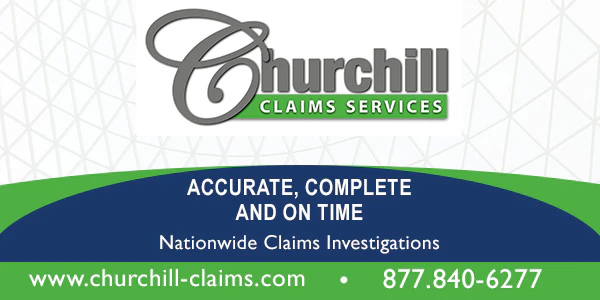
Understanding and Navigating Complex Coverage Issues
Thursday, May 25th, 2023 Claims Pages Staff Navigating Complex Coverage IssuesWhen it comes to insurance claims, few phrases quicken the heart rate like "complex coverage issues." For claims professionals, these are the thorny, intricate cases that test your knowledge, skills, and patience. But fear not! In this article, we'll guide you through the most common types of complex coverage issues, discuss how to navigate them, and provide practical examples of these issues and their resolutions. Let's make this journey less intimidating, and perhaps even a little fun.
Before we dive in, let's define what we mean by "complex coverage issues." Essentially, these are circumstances where the applicability of an insurance policy to a particular loss or damage is unclear. These complexities can arise due to ambiguous policy language, multiple policies that may cover the same loss, or novel situations that aren't clearly addressed by existing policy language.
Policy Interpretation
An insurance policy isn't light reading—it's a legal contract filled with specialized language and terms. Misinterpretations are a common source of complex coverage issues.
In the world of insurance claims, interpretation often hinges on the principle of contra proferentem, which translates roughly to "against the offeror." Basically, if a policy term is ambiguous, courts usually interpret it against the insurer, who drafted the policy. However, this principle only applies when the policy language is genuinely ambiguous. As a claims professional, it's crucial to understand the nuances of policy language and its legal interpretation.
Interpreting an insurance policy requires both a general understanding of legal principles and a more specific understanding of insurance law. Let's consider a few more principles that guide policy interpretation:
Literal Interpretation: According to this principle, the words of a policy should be interpreted in their ordinary sense. Terms that are not defined in the policy are given their typical meaning in everyday language. In some cases, this can lead to different interpretations, making the situation complex.
Reasonable Expectations: This principle suggests that an insurance policy should cover what a reasonable person would expect it to cover, even if the policy's literal wording does not necessarily support that expectation.
Doctrine of Reasonable Expectations: This legal principle dictates that an insurer cannot deny a claim based on an obscure policy clause that a policyholder couldn't reasonably be expected to understand.
These principles highlight why solid knowledge of both insurance and legal language is crucial for a claims professional. Misinterpretations can lead to wrong decisions, claim disputes, and even legal issues.
Policy Exclusions
Policy exclusions are specific situations, conditions, or circumstances where coverage does not apply. These are defined in the policy and form another common source of complex coverage issues.
The devil is in the details with exclusions. Often, disputes arise over whether a particular loss falls within an exclusion or not. For instance, a water damage claim may not be covered if it's due to flood, an exclusion in many standard homeowner's policies. But what if the flood resulted from a burst pipe within the home? Understanding and applying exclusions requires a keen eye and a good understanding of both the policy and the specific circumstances of the claim.
When it comes to policy exclusions, not all are created equal. Some exclusions are relatively straightforward, such as the flood exclusion in a standard homeowner's policy. However, other exclusions can be quite complex, such as those relating to war, terrorism, or environmental pollution. Understanding the specific language and legal interpretation of these exclusions is crucial.
Policy Ambiguities
An insurance policy should ideally be crystal clear, but alas, we live in an imperfect world. Ambiguities may arise due to unclear language, contradictions within the policy, or situations not anticipated when the policy was written.
For example, an ambiguity could arise if a policy covers "accidental discharge of water" but does not define what constitutes "accidental." If a pipe bursts due to lack of maintenance, is that an "accident" or a result of negligence?
Dealing with ambiguities can be a delicate balancing act. As a claims professional, you must consider legal interpretations, past claims decisions, and the insurer's business practices, all while keeping in mind the need for fair and ethical treatment of the insured.
Navigating Complex Coverage Issues
Claims professionals are the frontline soldiers in the battle of complex coverage issues. They are tasked with the difficult job of finding a balance between honoring the insurer's contractual obligations and providing fair treatment to the insured. Let’s elaborate on their key roles and responsibilities:
Investigation — A claims professional is responsible for thoroughly investigating a claim. This may involve examining the physical evidence, interviewing witnesses, and consulting with experts.
Assessment — After the investigation, the claims professional must assess the claim's validity. This includes determining whether the loss is covered under the policy, whether any exclusions apply, and whether the claim amount is reasonable and accurate.
Decision Making — Based on the investigation and assessment, the claims professional then makes a decision on the claim. This decision should be fair, unbiased, and in accordance with the policy terms and the insurer's business practices.
Communication — Throughout this process, the claims professional needs to communicate effectively with various stakeholders, including the insured, other insurer staff, and possibly legal counsel or regulators. The claims professional must explain the claim decision clearly and professionally, even in contentious or emotionally charged situations.
Now that we've identified key roles and responsibilities for claims personnel and covered some of the most common types of complex coverage issues let's talk about how to navigate them.
Knowledge is Power
The first weapon in your arsenal is knowledge. Understanding the policy language, relevant laws and regulations, and court decisions related to policy interpretation is crucial. Ongoing training and professional development can help keep you updated in these areas.
Collaborate and Consult
Don't hesitate to tap into your network. Colleagues, supervisors, and legal consultants can provide different perspectives on a complex coverage issue. Insurers often have experts on hand to provide guidance on tricky claims.
Document, Document, Document
In dealing with complex coverage issues, documentation is crucial. Keep a record of every step of the claims investigation process, every decision you make, and the rationale behind it. This documentation will be invaluable if the claim ends up in dispute or litigation.
Examples of Complex Coverage Issues and Their Resolutions
To give you a clearer picture of what we've been discussing, let's look at a couple of examples of complex coverage issues and how they were resolved.
Example 1: The Case of the Ambiguous Accident
John has a homeowner's policy that covers "accidental discharge of water." During a winter vacation, his heating system fails, and a pipe freezes and bursts, flooding his home. Is this an "accidental" discharge of water, or is John at fault for not maintaining the heating system while he was away?
The claims adjuster consults the policy and finds no clear definition of "accidental." The adjuster then looks at past claim decisions and finds a similar case where the discharge was ruled accidental because the insured could not have reasonably foreseen the heating system failure.
Using this precedent, the adjuster decides that John's loss is covered under his policy. He documents his decision-making process thoroughly in case of a dispute.
Example 2: The Exclusion Confusion
Jane has a commercial property policy for her restaurant. A fire breaks out in the kitchen and causes extensive damage. The insurer invokes an exclusion for losses resulting from "negligent maintenance of fire safety equipment."
The claims adjuster investigates and finds that the fire was due to a faulty gas line, not neglected fire safety equipment. After discussing with her supervisor and consulting with a legal expert, the adjuster decides that the exclusion does not apply in this case, and Jane's loss is covered.
In both examples, the adjusters applied their knowledge of policy interpretation, used their resources effectively, and documented their decisions thoroughly.
Insurance claims, particularly complex ones, are like intricate puzzles. The joy, and indeed the art, lies in disentangling the complexities, finding the right pieces, and fitting them together to get a clear picture. As you gain experience, these puzzles become less daunting and more exciting.
Understanding and navigating complex coverage issues can be a challenging task, but with the right knowledge, resources, and skills, you can turn these challenges into opportunities for growth and learning. Remember, in the world of insurance claims, complexity is not just a problem – it's the very thing that makes your work fascinating and worthwhile. Welcome to the wonderful world of complex coverage issues!
Expand your knowledge and expertise in navigating complex coverage issues by exploring the other articles in our editorial series. Each installment delves into a specific topic, offering valuable insights and practical tips to enhance your claims management abilities. From resolving coverage disputes to understanding emerging trends and leveraging technology, our series covers the essential aspects of managing complex coverage claims.
Recent Provider Listings
Serving Kansas, Missouri & Oklahoma Statewide
Kansas
Missouri
Oklahoma
Fire Investigations

